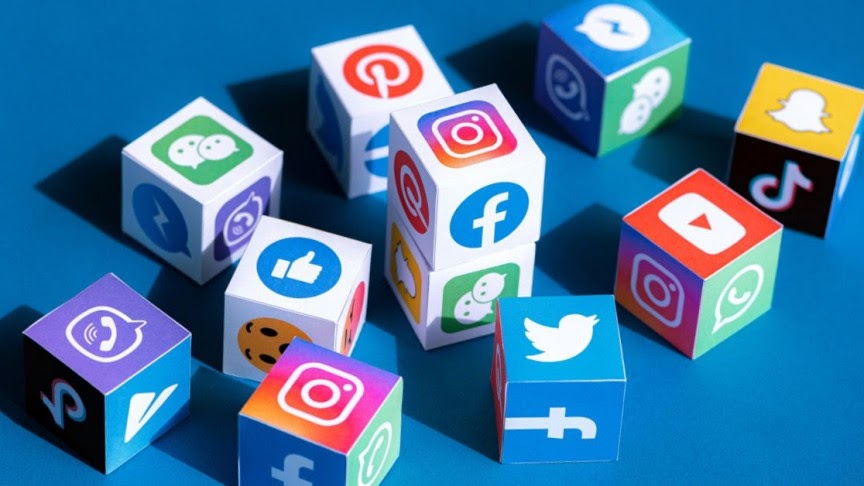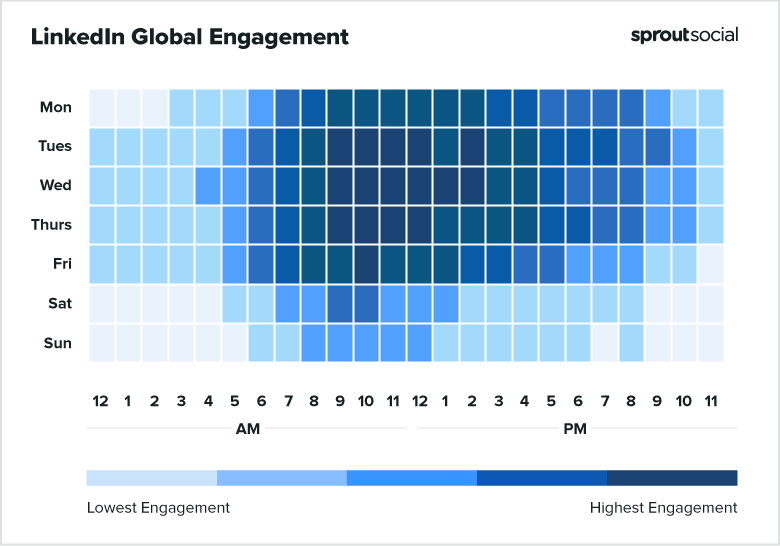Sending your data to our servers, please wait...





Oops... No results found.
Please try a different search phrase.
Social Media Marketing 12 min read
Four Reasons Why You Need Social Media Marketing
Written by Ayesha Renyard
Content Writer @ Galactic Fed
Expert reviewed by Dallin Porter
Marketing Director @ Galactic Fed
Published 14 Jul 2021
Today’s top social media platforms have come a long way since they were created.
LinkedIn launched in 2003 from the living room of co-founder Reid Hoffman. At that time, investors scoffed at consumer internet ventures, so Hoffman partially funded the project himself.
Facebook was launched in 2004 by 19-year-old Mark Zuckerberg to create an exclusive online community for Harvard students. This followed the launch of his other short-lived app called Facemash, which pinned photos of female students side-by-side and asked users to vote who was better-looking.
In 2010, Kevin Systrom launched Instagram. The prototype was called Burbn, and it was a location-based web app that allowed users to check-in, post their plans and share photos. His love for bourbon and whiskey inspired the name.
While many of these social media platforms saw humble beginnings, they now offer so much more than dog videos, relationship statuses, and food photos.
For businesses, they create a huge marketing opportunity.
If you haven’t connected the dots yet, don’t worry. As part of our Digital Marketing Series, we’re taking you on a guided tour of four big benefits of social media marketing.
Spoiler alert: by the time you’re done reading this article, you’re going to be itching to launch your next social media marketing campaign. So keep your eyes peeled for marketing tips along the way!

What is social media marketing?
Social media marketing is the use of social media platforms to connect with your audience and guide them through the marketing funnel—from building brand awareness and driving website traffic to increasing sales and growing customer loyalty.
It sounds like it plays a significant role, right? Unfortunately, it seems like a lot of businesses are underutilizing social media. We’re thinking this has something to do with how companies view social media marketing and its ability to drive business results.
It’s time to debunk these speculations and assumptions. Here are four reasons why you need to incorporate social media marketing in your strategy today.
1. It builds brand awareness
Did you know that in 2020, there were 3.96 billion people actively using social media in the world? Back in 2015, there were only (haha) 2.07 billion users—that’s an overall increase of 92.76% in just five years!

Source: Backlinko
There are literally billions of people you can reach on social media platforms. And it’s not impossible. We created a custom Facebook Ads campaign for a food and beverage retail franchise that reached over 2 million users in 3 weeks!
If you think your reach is only as wide as your following, think again. 83% of polled Instagram users say they regularly discover new products on the app, such as on its explore page.
Frequently businesses overlook brand awareness and focus all their attention on sales and signups. News flash: for prospects to get to the bottom of the funnel, they need to be at the top of the funnel first. In other words, brand awareness is the first step to getting new customers. If you skip it, you also skip out on conversions.
Tip for building brand awareness:
This is the year to leverage influencer marketing!
Once upon a time, to be a social media influencer, you had to have hundreds of thousands of followers. And to work with influencers, you needed a pretty big marketing budget, which meant that influencer marketing was primarily reserved for big brands.
But the industry has grown and evolved immensely over the past five years. Now, with the rise of micro-influencers, it’s becoming more affordable. So it’s time for you to score a piece of the pie and leverage their networks to grow your own.
Source: Business2Community
While TikTok is the new kid on the block, there’s huge potential for businesses to get noticed on this platform. Are TikTok users your target audience? If so, check out this blog article on how you can go viral and boost your brand identity.
2. It humanizes your brand
You’re selling to people who want to buy from people. For your business to thrive, you need to make a human connection with your audience. You need to humanize your brand.
Your brand should feel like a friend that your customers have known for years. It’s not about predictability but rather familiarity. Your goal is to be relatable and magnetic, consistent and honest, that warm fuzzy feeling from eating homemade cinnamon buns.
If you think this is all feel-good fluff, then you’re wrong.
Building these connections with your audience is incredibly important for trust. According to PwC’s Global Consumer Insights Survey, more than one in three consumers rank trust as a top factor influencing their buying decisions.
When you take the time to get to know your prospects, you can create content that speaks to their interests. When they feel understood, they’ll trust you and are more willing to engage with your brand and product.
Social media platforms are an organic place to humanize your brand and build the relationships necessary to create trust. Think about all your other marketing tactics, such as paid search ads, email nurture campaigns, blog writing, and SEO. Do they foster human-to-human connections with your audience? Not really.
Tip for humanizing your brand:
You can humanize your brand in many ways—sharing the founder’s story and featuring your employees on your social media channels are both examples. But we challenge you to go the extra mile and create an employee advocacy program. Trust us, it’s rewarding.
Source: Forward
Host company events, challenges, and competitions. Send out swag and prizes. Provide access to learning tools and training. And most importantly, encourage them to share their experience on social media. Creating a hashtag or filters is a great way to stir up some engagement.
Want to hear how companies like Electronic Arts, Dell, Starbucks, and Reebok did it? Check out these case studies for inspiration.
3. It enables social listening
The consumer world is constantly evolving. Industry standards change, customer expectations change, and therefore, your business will change.
You don’t want to wait for the Saturday newspaper to read about the next big trend or a customer service ticket to hear about a bad experience. You should have your eyes and ears open at all times—so you can remain ahead of the curve and make changes proactively.
That last bit is important. You’re not just monitoring your social media channels for mentions of your brand, competitors, and product. You’re also taking action.
Source: Sprout Social
Understanding how people feel about your brand, industry, and competitors helps you keep your marketing and product development on track. It also allows you to take action and address positive or negative posts.
Here’s how it works: Imagine you owned a bakery, and you overhear two customers talking about your croissants. They love them! But they find your banana bread way too dry. You would ask around to see if others feel that way about your banana bread too. (Sadly, they do.) You would then make tweaks to the recipe to make it more moist (and throw in some extra chocolate chips for good measure). The outcome? Happy (and more) customers.
Tip for social listening:
To get started, you’ll first need to curate a list of keywords and topics to monitor. Here’s a list of important keywords and topics to monitor right away:
- Your brand name and handles
- Your product name(s), including common misspellings
- Your competitors’ brand names, product names, and handles
- Industry buzzwords
- Your slogan and those of your competitors
- Names of key people in your company and your competitors’ companies (CEO, spokesperson, etc.)
- Campaign names or keywords
- Your branded hashtags and those of your competitors
- Unbranded hashtags related to your industry
To keep things organized, consider using a social listening tool, like Hootsuite Streams. It connects all your social channels, so you can track, filter, and analyze all in one place.
Interested? Check out this video walkthrough to learn more:
Source: Hootsuite
4. It increases web traffic (for free)
Your website is the final destination. Here, you can convert your audience into leads, subscribers, customers, and more. The more people you bring to the site, the more conversions you get. It’s simple math, really.
So how do you get them there?
- Organic traffic: those who find your website in the search engine results after making a query
- Direct traffic: visitors who directly type your website’s URL in their browser bar
- Referral traffic: those who click on a link to your page from another website (such as a blog or forum)
- Email: those who click a link in one of your marketing emails
- Paid media: visitors who click on a pay-per-click ad
- Social media: users who click on an organic social media post
Let’s talk about that last one. As a traffic source, social media opens up a massive pool of prospects that require very little effort to tap into. Someone could see your brand simply through another user’s post and click through to your website. The best part? It’s free.
To increase the likelihood of scoring more shares and clicks, make sure your content is visual. Photos, videos, and infographics perform much better than text posts on social media.
Tip for pushing social users to your website:
Well-timed posts are incredibly important for maximizing your reach, increasing engagement, and generating traffic.
We encourage you to create a posting schedule. You can start by doing some research on general trends. As you can see below, there are certain days and times that generally see higher social media engagement.



While there are similarities between the four platforms, there is also some variation, which means you may have to schedule your posts at different times.
We also recommend double-checking this information against your own analytics—when is your audience most active?
If you have a Facebook or Instagram business profile, you can find these insights under the Audience section.
Source: Buffer
Ready to get social?
These are just four of the many benefits of social media marketing. It plays a crucial role in both top-of-funnel and bottom-funnel activity—without it, you could be missing out on some serious business opportunities.
So don’t! If you’re not comfortable kickstarting a social media strategy, then reach out to us. We’ve got a team of experts ready to share your brand with the social media world.

Ayesha Renyard
Content Writer @ Galactic Fed



